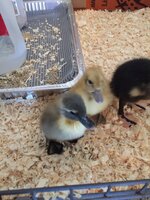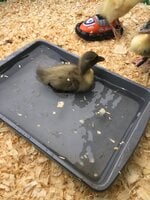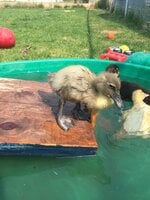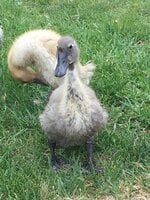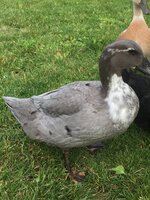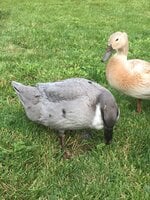CLovesDucks
Smitten with Ducks
Hi friends! I’m a runner/mallard momma and decided to add two new female Blue Swedish and a female Black Runner to my family.
My newest ducklings are 3.5 weeks old and one of the Blue Swedish has spots.
This is my first time with Swedish ducks and I’m thinking she might be a splash. What do you guys think? Please excuse my dirty garage steps



